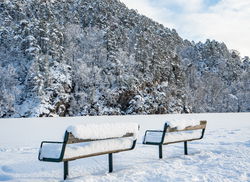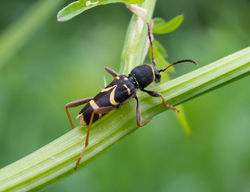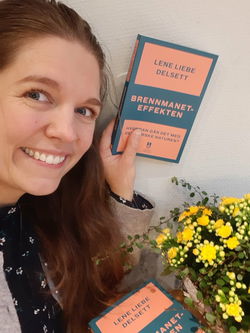In my back yard
A commonly used expression in the environmental debate is NIMBY, short for Not in My Back Yard. It encapsulates the idea that we want new things to be built, just not where we live ourselves. It is often used to poke fun at those who are all for the construction of new infrastructure, as long as they don’t actually have to see it. In some cases, the ridicule is deserved, but not always.
In my view, the topic of our own back yards can be discussed in at least three ways, all of them much more interesting. In fact, if everyone looked after their own back yards, also in the non-literal sense, it would be a good thing, on the whole. The greatest threat to biodiversity comes from changes in land use, e.g. for construction purposes. We absolutely have to stop taking more and more cultivated and uncultivated land to build roads, warehouses and holiday homes. If everyone chose nature and food production instead of roads and holiday homes in the countryside they love, it would send a powerful signal to the politicians.But what should we have in our own back yards? Something that is good for the planet. And given the situation we’re in at the moment, some of us will also have to SEE the green solutions. Sometimes, they just have to be visible. Maybe the best place for a wind turbine is at the top of your favourite ski slope. Maybe solar panels will mar the smart, tiled roof of your neighbour’s house. Maybe your manicured lawn will turn into a riotous wildflower meadow for the sake of the insects.
Because our own back yard can also be seen as a symbol of something bigger. The world must cut its greenhouse gas emissions and take better care of biodiversity. And it must do so very fast. It’s easy to point to China’s coal-fired power plants or accuse Brazil of failing to protect its rainforests, but it doesn’t change the fact that we in Norway have a considerable responsibility and great opportunities to contribute to the collective international effort. This applies equally to the climate and the environment, but is perhaps easiest to see when it comes to biodiversity. Only Norwegian decision-makers can decide to protect Norwegian nature, because this is where the Norwegian nature is.
It is over our own back yards that we have most power. When we decide how we are going to use an area, we are deciding what happens to nature. This is true for my own back yard (choosing to plant a lawn, create flowerbeds or lay paving) and when politicians draw up various kinds of zoning regulations and area plans. In fact, it is the people who sit on municipal councils who have the most power, because they are closest to the nature where they live. Almost nine out of ten decisions regarding the use of space in Norway are taken by municipal councils. And as Spiderman and Pippi Longstocking say: With great power comes great responsibility – and if you’re very strong you must also be very kind. A great deal will be resting on the shoulders of Norway’s municipal councillors in the next few years.
All this can seem depressing, or you can view it as the huge opportunity it is. There are thousands of municipal councillors across the country who will be making decisions about the use of land in their districts, and they can make a huge difference there. They will have to say no to a lot of things because of the precarious situation we are in. I don’t think Norwegian nature or emission levels can stand more high-speed, multi-lane highways. Municipal councils will also have to choose nature and farming instead of allowing land to be used for warehouses and shopping centres. At the same time, this means saying yes to a lot of other things! Municipal councils can choose to be places that are rich in nature, and that’s no small thing. Municipal councils are responsible for parks, playgrounds, kindergartens and schools, and they can choose more nature and solutions that don’t lead to high levels of consumption – when it comes to space or other resources.



